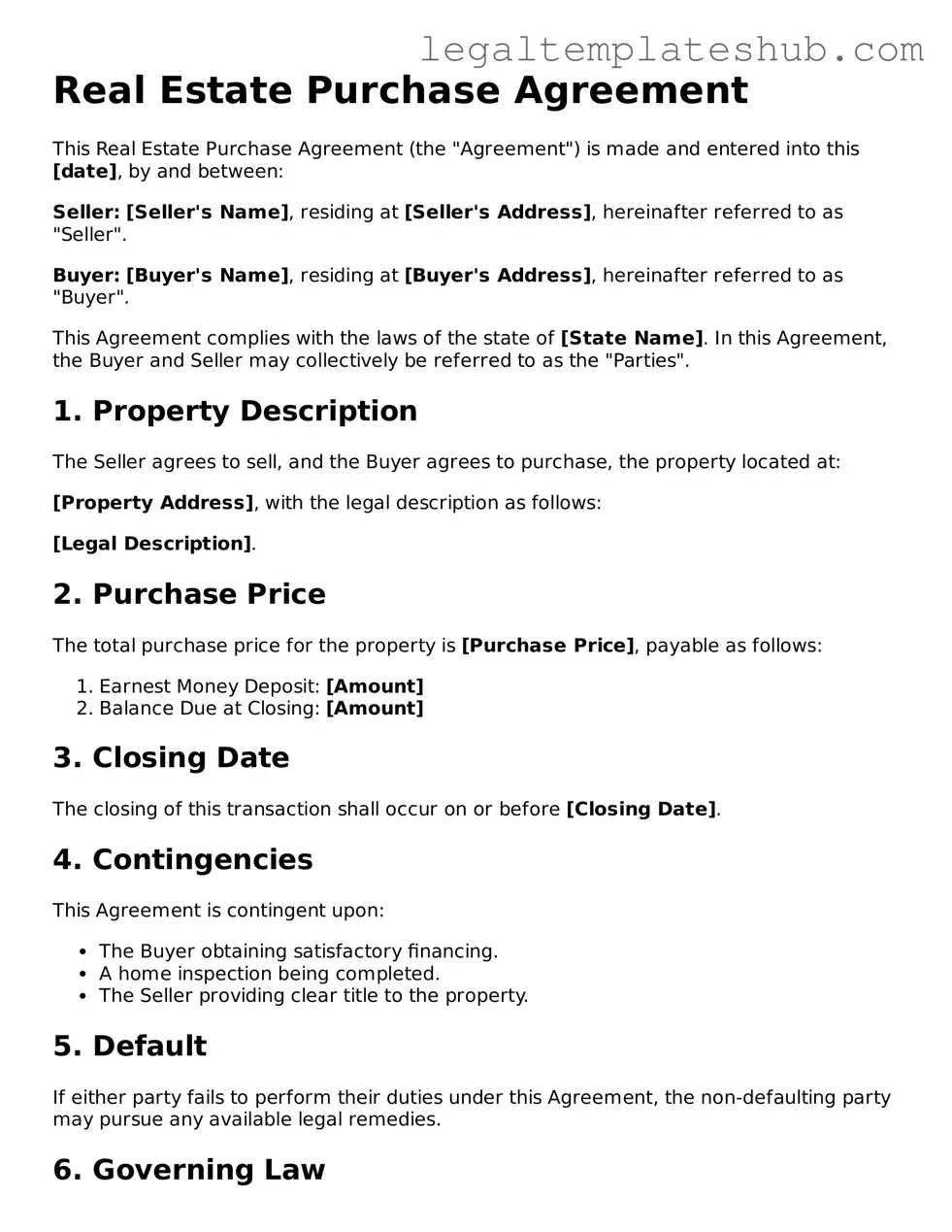Real Estate Purchase Agreement - Adapted for State
Real Estate Purchase Agreement Document Categories
Instructions on Filling in Real Estate Purchase Agreement
Once you have the Real Estate Purchase Agreement form in hand, the next step is to carefully fill it out with accurate information. This document is crucial for outlining the terms of the sale and ensuring that both the buyer and seller are on the same page. Here’s how to complete the form step by step.
- Begin with the date: Write the date when the agreement is being filled out at the top of the form.
- Identify the parties: Fill in the names and addresses of both the buyer and the seller. Ensure that all names are spelled correctly.
- Property description: Provide a detailed description of the property being sold. This should include the address and any relevant legal descriptions.
- Purchase price: Clearly state the total purchase price for the property. Be specific and accurate.
- Deposit amount: Indicate the amount of earnest money or deposit the buyer will provide. This shows the buyer's commitment to the purchase.
- Financing details: If applicable, specify the type of financing the buyer will use, such as a mortgage or cash purchase.
- Closing date: Enter the anticipated closing date when the sale will be finalized.
- Contingencies: List any contingencies that must be met for the sale to proceed, such as home inspections or financing approvals.
- Signatures: Finally, both parties must sign and date the agreement. This indicates that they agree to the terms outlined in the document.
After completing the form, it’s important to review all the information for accuracy. Both parties should keep a signed copy for their records. This agreement will guide the transaction and help ensure a smooth process moving forward.
